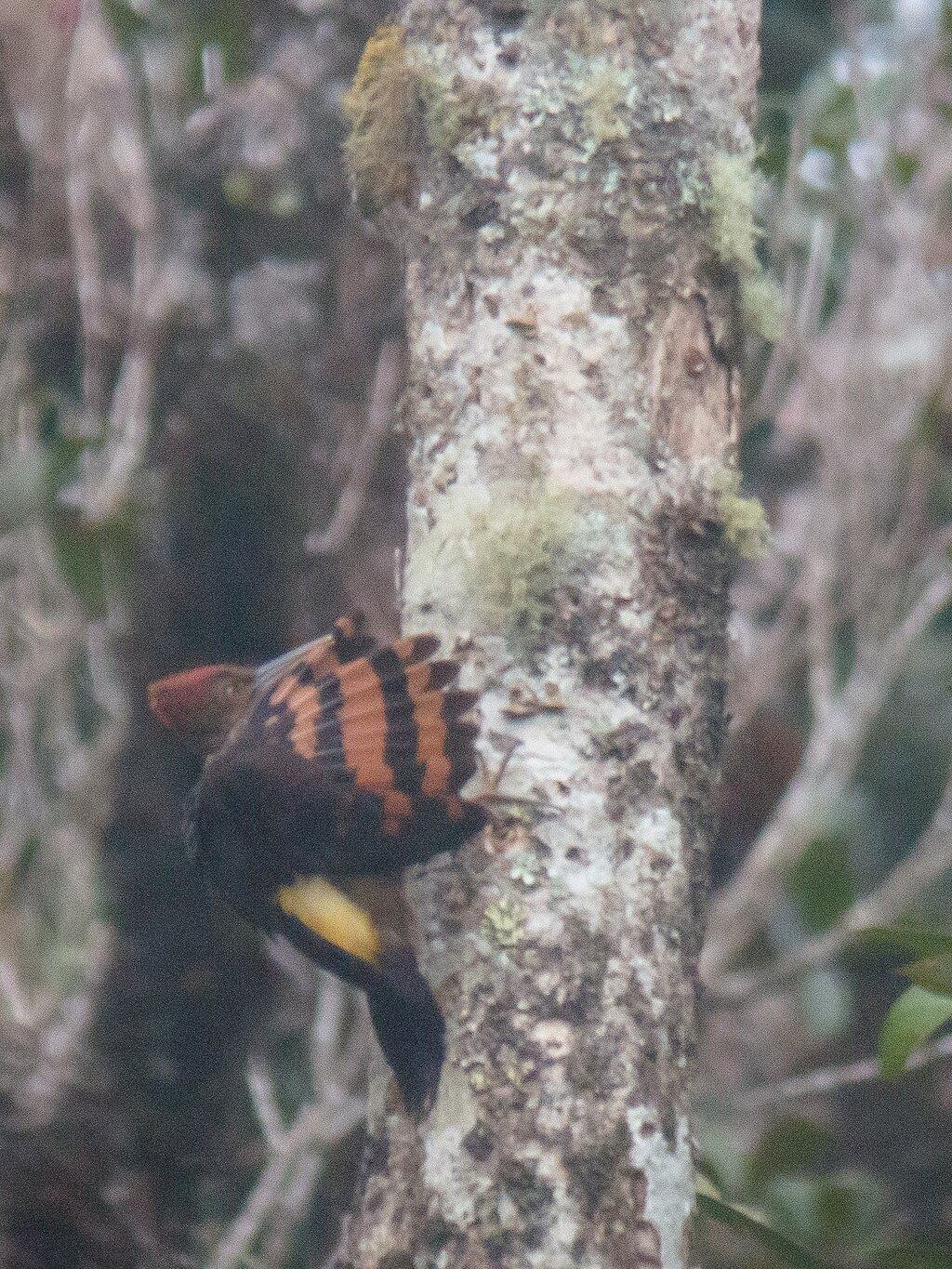
By Lars Peterson
Etymology: Reinwardt’s Woodpecker
First Described By: Temminick, 1825
Classification: Dinosauromorpha, Dinosauriformes, Dracohors, Dinosauria, Saurischia, Eusaurischia, Theropoda, Neotheropoda, Averostra, Tetanurae, Orionides, Avetheropoda, Coelurosauria, Tyrannoraptora, Maniraptoromorpha, Maniraptoriformes, Maniraptora, Pennaraptora, Paraves, Eumaniraptora, Averaptora, Avialae, Euavialae, Avebrevicauda, Pygostaylia, Ornithothoraces, Euornithes, Ornithuromorpha, Ornithurae, Neornithes, Neognathae, Neoaves, Inopinaves, Telluraves, Afroaves, Coraciimorphae, Cavitaves, Eucavitaves, Picocoraciae, Picodynastornithes, Piciformes, Picides, Picidae, Megapicini
Status: Extant, Least Concern
Time and Place: Since 10,000 years ago, in the Holocene of the Quaternary


The Orange-Backed Woodpecker is known from Southeast Asia and Oceania

Physical Description: These are fairly large woodpeckers, reaching up; to 30 centimeters in length. They look like other woodpeckers, of course – with somewhat round bodies, long thin necks, round heads, and long pointed beaks. Their feet are zygodactylous, with two toes forward and two toes backward. They also have small tails. In general, they have a variety of orange and brown hues in terms of plumage, though they differ based on sex. Males tend to have orange crests, necks, and stomachs; they also have bright orange stripes on the wings. Females are brown in those places, except on the wings, where the orange stripes are a bit more dull. The bulks of their wings are dark brown and their tails are also dark brown. They have white patches on the front of their backs. Their bills, which are pale colored, are slightly curved.
Diet: Orange-backed Woodpeckers feed mainly on beetle larvae, termites, caterpillars, ants, and other insects.
![]()
By Jean Gabriel Pretre, in the Public Domain
Behavior: These woodpeckers will live in families or mated pairs, foraging together in low and middle parts of trees. They will mainly attack rotting logs, dead stumps, and soft tree trunks – even fines from time to time. They peck and hammer loudly and forcefully to get the wood away to reveal the food, spending minutes to excavate the tasty food inside. They’ll then reach in with their long tongues (which wind around their heads) to grab the food. They don’t tend to move a lot to get food, but prefer to stick in specific locations. They will make loud, ringing calls to each other as they feed, sometimes with more rattling and irregular calls as well. They also make very excited “cha-cha-cha” calls when finding members of the family. Their bursts of digging in wood, however, are very short and loud. They breed from January through September, displaying to their mate with raises of the crest, directs of the bill, and wing flicks and spreads. They build nest holes through excavation a little high up in a dead tree, and they lay one to two eggs. The parents will feed the babies directly – they do not regurgitate. They also do not migrate.

By Mike Prince, CC BY 2.0
Ecosystem: Orange-Backed Woodpeckers primarily live in evergreen rainforest and in coastal vegetation. They tend to stick to lowlands, rather than getting particularly high up into the mountains, though they can be found there from time to time.
Other: Orange-Backed Woodpeckers are not threatened with extinction; though they are uncommon in most of their range, they are more common in Sumatra and Borneo.
~ By Meig Dickson
Sources under the Cut
